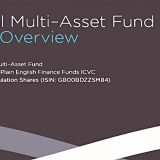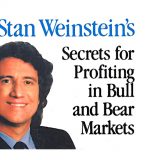Contents
Excess Returns
This is the home page for our analysis of Frederik Vanhaverbeke’s book “Excess Returns”
It has links to each of the articles on the book, and a summary of the conclusions drawn in each case.
Here are the links to the individual articles:
- Philosophy and Psychology
- Styles and Strategies
- Finding Bargains
- Stocks to Short and to Avoid
- Fundamental Analysis
- Company Culture
- Valuation
- Process
Learnings
Beating The Market
- The EMH says that it’s impossible to beat the market, but an analysis of the track-records of dozens of successful investors suggests that the opposite is true
- There are four ways to beat the market
- trading using technical analysis and price action
- trend following or momentum trading
- macro investing using global economic conditions, and
- fundamental investing using the data on a specific company – valuation, management, accounts and sector prospects (Excess Returns focuses on fundamental Investors only)
- Stock price fluctuations are unpredictable in the short-term, but in the long-term, prices revert to (and may overshoot) the Intrinsic Value of the stock – the fair value (FF), which can be calculated using the discounted cash flow (DCF) formula
Styles and Strategies
- The human brain has two competing systems for problem-solving:
- the reflexive (fast) system – driven by instinct – which often takes short cuts
- the reflective (slow) system – the rational and conscious process of reasoning and thinking
- The stock market involves high emotions and difficult problems, which impact the effectiveness of the slow system, and leads to a large number of systematic psychological errors, known as cognitive biases.
- Cognitive biases in turn produce two situations which can be exploited to deliver excess returns:
- the boom-bust cycle
- popular and unpopular stocks
- There are three “easy” approaches to investing that the typical UK Private Investor can use:
- And there are two more advanced approaches that can be adopted:
- pairs trading is reasonably straightforward to implement with spread betting (or CFDs or options)
- top-down investing can be used to trade indices, commodities and currencies (eg. via spread bets), but this is not easy
- Successful investors need some skill in estimating the fair value of companies
- how much estimating skill is open to debate
- you don’t need to be the best in the market, just better than most of the market, or willing to put in more work than most of the market
- it can be argues that that private investors managing relatively small pots have a built-in advantage over institutional fund managers with mandate constraints and large pots
- Successful investors also need the right mindset – important psychological aspects include:
- independent / contrarian thinking
- patience / long-term thinking
- discipline (sticking to the process)
- emotional detachment (calmness in the face of irrational markets, lack of attachment to stocks they own etc.) to limit the impact of cognitive biases
- successful Investors are the true rational participants assumed by theory to make up the entire market
- in fact they are a rarity, and rather than drive the market, they take advantage of its deviations
Finding Bargains
- Successful investors usually have a systematic approach to finding bargain stocks
- The most attractive opportunities for UK private investors are in:
- dull and unfashionable companies
- small companies
- spin-offs and parent companies of a spin-off
- privatisations
- guru and fund manager investments
- insider buying (directors)
- stocks with under-appreciated catalysts
- stocks that are removed from an index
- The kinds of stocks to ignore are:
- Stocks in the spotlight
- IPOs, apart from privatisations and de-mutualisations
- Companies associated with new trends, and the incumbents affected by them
- Tips and analyst recommendations
- Stocks added to an index
- Blue-sky companies
- M&A situations (unless you react very quickly)
Shorting
- To go further and short the stock, you need more evidence, because the downside risk in shorting is theoretically unlimited. Things to look for include:
- poor management – dishonest, greedy, exuberant or weak
- poor financials – weak balance sheets, poor returns on equity, poor cash flows and flawed business models
- growth saturation coupled with plans for expansion into new territories or lines of business
- companies in declining industries, or supplying to one
- high prices in a competitive market
- high float, with high institutional interest and medium short interest
- Some types of company should not be shorted:
- Over-valued but good companies
- Tech firms
- Stocks that have already fallen in price
- Shorters also need a catalyst to make the share price fall quickly. Candidates include:
- insider (Director) sales, especially after bullish announcements or an IPO
- resignation of the Chairman / CEO / CFO
- change of auditor / late filing of accounts
Fundamental Analysis
- There are three parts to fundamental analysis:
- quantitative analysis
- qualitative analysis, and
- management analysis
- Quantitative analysis is the ratio analysis of financial statements that we’ve come across before:
- income statement analysis looks at profit, dividends and return on capital
- the balance sheet tells us about liquidity and solvency (leverage)
- the cash flow statement looks at operating and free cash flows, which should match reported earnings
- always look for improving trends and favourable industry comparisons
- watch out for accounting manipulations
- Qualitative analysis is used by fewer investors, and this can be a source of competitive advantage
- The main factors in qualitative analysis are industry structure, business model and competitive forces
- A favourable industry has the following characteristics:
- barriers to entry
- opportunities for product differentiation (not a commodity industry)
- stability and low rate of change (not a “hot” industry, not technology)
- no barriers to exit, avoiding overcapacity and price competition
- no substitute products
- low capital requirements
- A favourable business model will:
- not be complicated
- involve lots of repeat business
- have been proven over at least one business cycle
- Competitive forces act between a firm and its customers, suppliers and rivals
- Customers:
- do they need the product under all economic conditions (defensive products)?
- can they switch easily to a competing product, or are they locked in?
- is the company the cheapest provider at a given quality level?
- does the company have a strong brand?
- does the company provide excellent service?
- does the company have many customers, or is it reliant on just a few?
- Suppliers (including labour):
- when suppliers can raise their prices, the company has a weak position
- when there are lots of suppliers or substitute inputs, the supplier’s position is weak
- if the company is a large part of the supplier’s business, then the supplier’s position is weak
- if the input component is critical, the supplier has more power
- low-skilled labour has a weak position, especially when unemployment is high
- entrenched unions make it difficult to switch labour inputs
- Rivals:
- market leaders usually make the best investments
- duopolies are okay
- avoid industries with lots of equally sized players who will compete against each other
- A strong competitive position is supported by the ability of the company to maintain that position – to control its destiny
- Growing companies make the best investments
- early stage growth is risky
- historic growth can predict future growth
- growth should be driven by more units or higher prices
- growth mean reverts and all companies reach saturation eventually
Company Culture
- Company culture and management are important to fully understanding and valuing a firm, but this is an area where good information is not readily available to the private investor
- Six internal functions help a company to maintain its competitive position:
- Culture
- HR
- Structure, organisation and process
- Marketing
- Research and development
- Operations (back office)
- The role of management in a company’s success is generally overstated
- The things to look for in management are:
- personality
- experience and track record
- skills (capital allocation, strategic thinking)
- focus
- allegiance to the company
- passion and energy
- value promotion
- The board of directors defend the interest of shareholders
- they need to speak up when management underperform
- Measures of a good board include:
- experience – each board member should have unique expertise and knowledge
- independence
- board size <= 7
- management compensation and director pay
- separation of Chairman and CEO
- good decision-making process
- director shareholdings
- small number of other directorships
- regularity, frequency and attendance of meetings
- Information in many of these areas is difficult to come by
- Sources of public information include:
- official regulatory documents (financial statements etc.)
- broker reports
- company websites
- annual meetings
- bulletin boards
- brokers and platforms
- commercial sites like Morningstar and Digital Look
- investor shows
- Investors can also make use of scuttlebutt – “everything else”:
- visiting shops or other premises
- using the products and services
- talking to employees, customers, competitors and suppliers
- this can provide juicy information, at the expense of lots of leg work
Valuation
- Keep the valuation model as simple as possible.
- Restrict the number of parameters that are used
- Avoid DCF where possible.
- Focus on:
- PE (with PEG)
- P/FCF
- EV/S
- EV/EBIT (with PEG-EV/EBIT)
- P/BV
- Be conservative.
- Use a margin of safety.
- Prefer balance-sheet based multiples.
- Use normalised and trailing values for income and /or cash flow-based ratios.
- Be sceptical of growth and competitive advantages.
- Always double check valuation results since the markets are not stupid.
- Use comparisons with peers and with historical multiples.
- Limit errors through triangulation.
- Look for quality at a fair price.
Process
- If you don’t have a coherent strategy, get one and stick to its rules
- To maintain independence, cut out the noise
- Some top investors (eg, Buffett) are located far away from the markets
- To counter psychological biases, pay special attention to the bear case (or if you are planning to short, the bull case)
- always look for information that disproves rather than confirms your investment thesis
- sell those stocks where you become aware that you are biased / attached (or indeed, simply “spring clean” your portfolio on occasion)
- Limit your attention to (changes in) stock prices
- don’t check your portfolio every day
- frequent checks lead to the identification of spurious patterns and to anchoring to historical prices











































